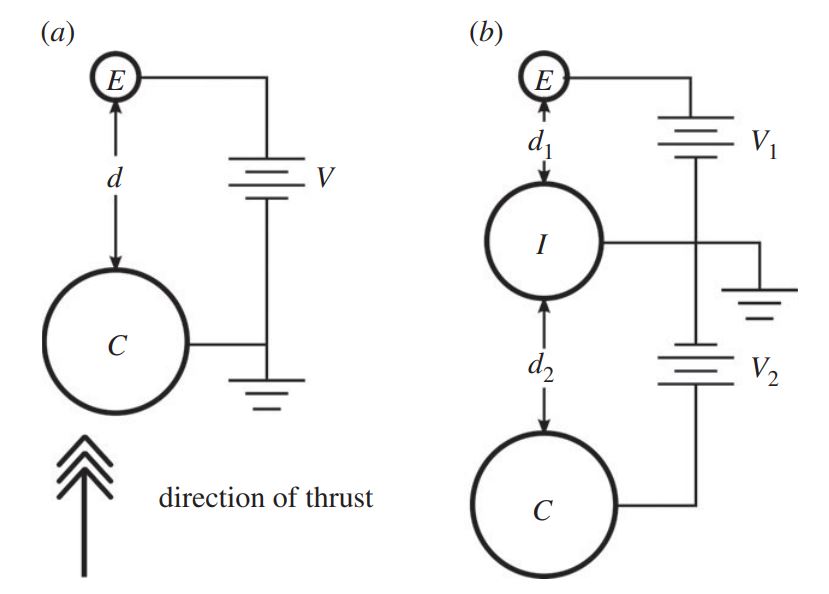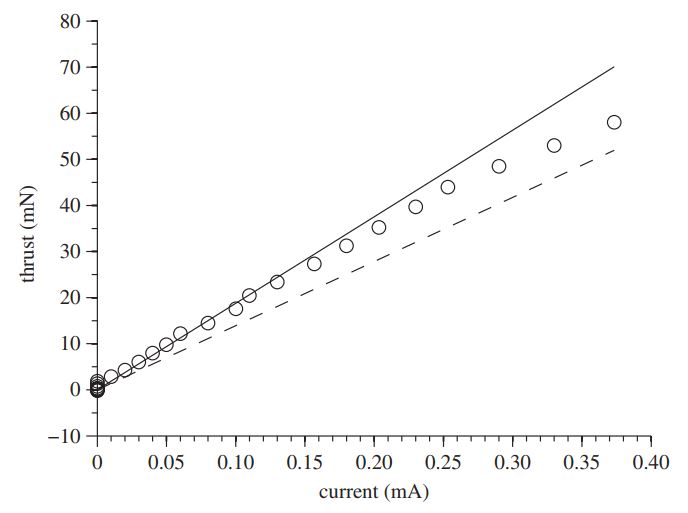Lifter theoretical calculations
The following are two different theories with theoretical calculations for how lifters work, the first by researchers from MIT and the second by Leon Tribe.
On the performance of electrohydrodynamic propulsion
This is a paper by Kento Masuyama and Steven R. H. Barrett, of the Department of Aeronautics and Astronautics, MIT from 2013. It includes a one-dimensional theory for single-stage (SS) and dual-stage (DS) thrusters, lifters, and compares them to experimental results.

The following is figure 6 from the paper comparing experimental data with theoretical predictions for a gap between the wire and foil of 3cm.

The physics of electrokinetic devices applying and adapting the Child-Langmuir Law derivation for vacuum diodes
The Child-Langmuir Law describes the characteristics of a parallel plate vacuum diode. By using this approach, we can derive a one dimensional expression for the characteristic properties of Lifters and related electrokinetic devices and by drawing an analogy to the vacuum diode, gain insights into the Lifter's subtle properties. A possible explanation for the Biefeld-Brown effect is given for both the air and vacuum.
- Part 1: electrokinetic devices in a vacuum (PDF file) by Leon Tribe, 16th January 2007
- Part 2: electrokinetic devices in air (PDF file) by Leon Tribe, 18th September 2007
- 1D Poisson solver for lifters (Excel spreadsheet)
Essentially this figures out the voltage, electric field, charge density etc. numerically and then compares it to the formulae I derived in the pdfs. 1D is limited in its use but I've put it up with the pdf's anyhow. Feed it the parameters of the Lifter, add in a fiddle factor for the characteristic area and it will tell you the predicted force. For a given Lifter, the hope would be that it will tell you what will happen if you doubled the voltage, doubled the gap, changed the medium etc.
Leon Tribe, January 18, 2007
